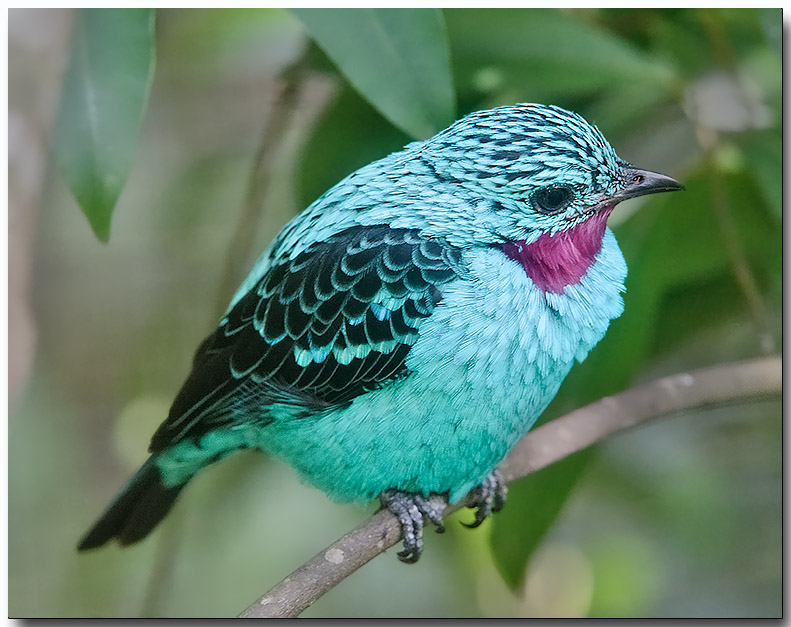
Cotinga cayana
TAXONOMY
Cotinga cayana Linnaeus, 1766.
OTHER COMMON NAMES
French: Cotinga de Cayenne; German: Halsbandkotinga;
Spanish: Cotinga Grande.
PHYSICAL CHARACTERISTICS
The average weight is 2.7 oz (76 g). Sexually dimorphic. Females
are darkish brown with a light brown, spotted breast.
Males are a stunning turquoise color with shimmering iridescent
feathers and a band of blue across the chest.
DISTRIBUTION
This species is found throughout the Amazon. It is the only
species within the genus that overlaps the geographic
DISTRIBUTION
of other congeners.
HABITAT
This species is a canopy specialist in lowland tropical evergreen
forest. While principally a lowland species, it may range up to
0.5 mi (800 m).
BEHAVIOR
The quiet
BEHAVIOR
of the members of this genus is in contrast
with their vivid colors. During courtship male spangled cotingas
will flatten themselves horizontally, moving the wings and
spreading the tail while emitting a soft and mournful
“hooooo.”
Various congeners will forage in the same tree with spangled
cotingas, such as plum-throated cotinga (Cotinga maynana).
The spangled cotinga will also forage with other species
of cotingas including the purple-throated (Querula purpurata)
and bare-necked fruitcrows (Gymnodoerus foetidus).
While conspecifics are often found in close association,
there is at least one record of a male spangled cotinga chasing
another male from the area. A female spangled cotinga and female
cinereous mourner simultaneously mobbed a female barenecked
fruitcrow through habitat that was atypical for the
latter species. On another occasion a male spangled cotinga
was observed chasing a black-headed parrot (Pionites
melanocephala).
FEEDING ECOLOGY AND DIET
Fruit and berries are consumed, often “gorging” at a masting
tree or bush such as mistletoe. The fruits are often plucked on
the wing. Although the seeds of larger species (e.g., mistletoe)
might be regurgitated, smaller seeds are often swallowed. Insects
are also taken.
REPRODUCTIVE BIOLOGY
The mating system is not completely known within this group.
However, there is some evidence that loose lek associations
may be in place.
The nest is platform type, often high in a tree fork, or next
to an epiphyte. The female incubates and cares for the young
alone.
CONSERVATION STATUS
Not threatened.
SIGNIFICANCE TO HUMANS
Several indigenous tribes use cotinga feathers in their ornamentation.
Photo Gallery of - Spangled cotinga
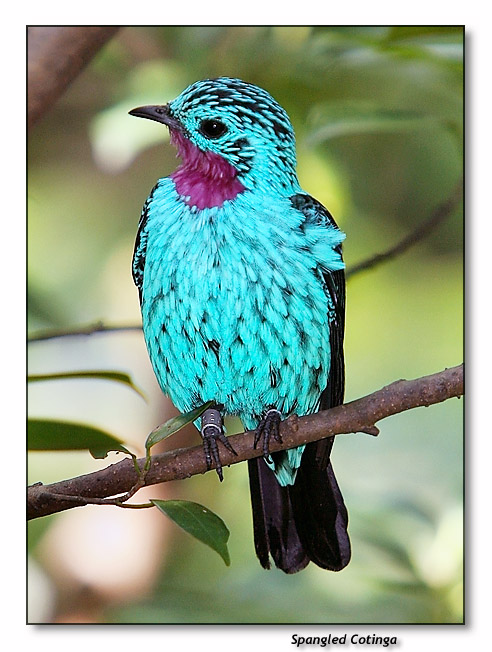
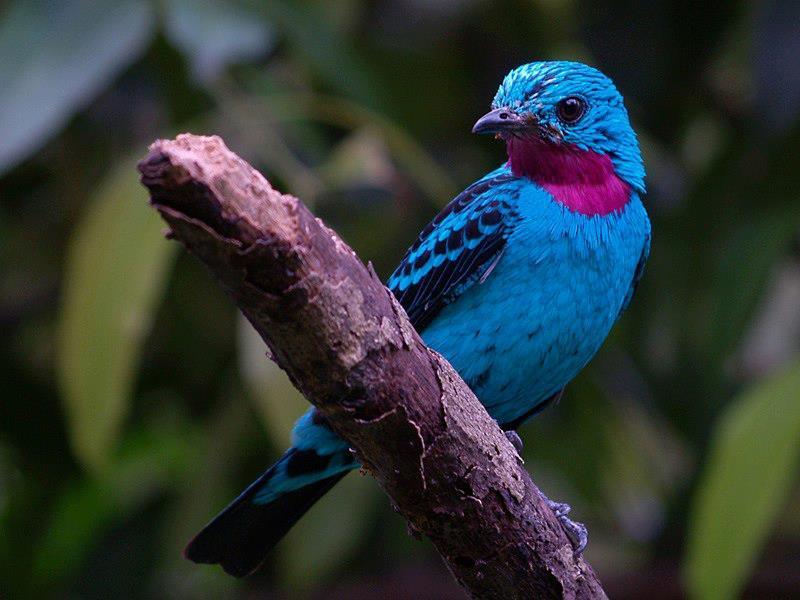
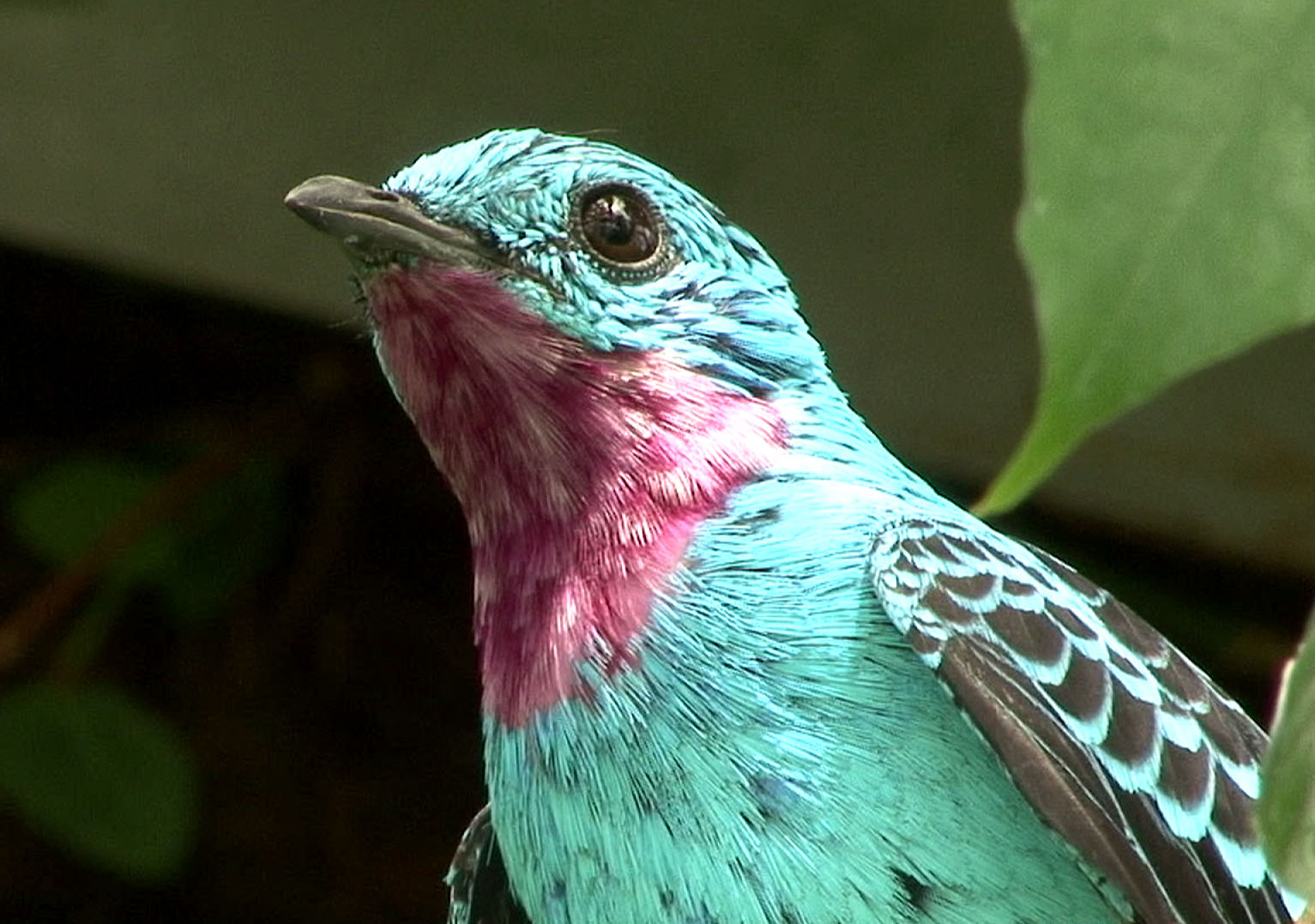
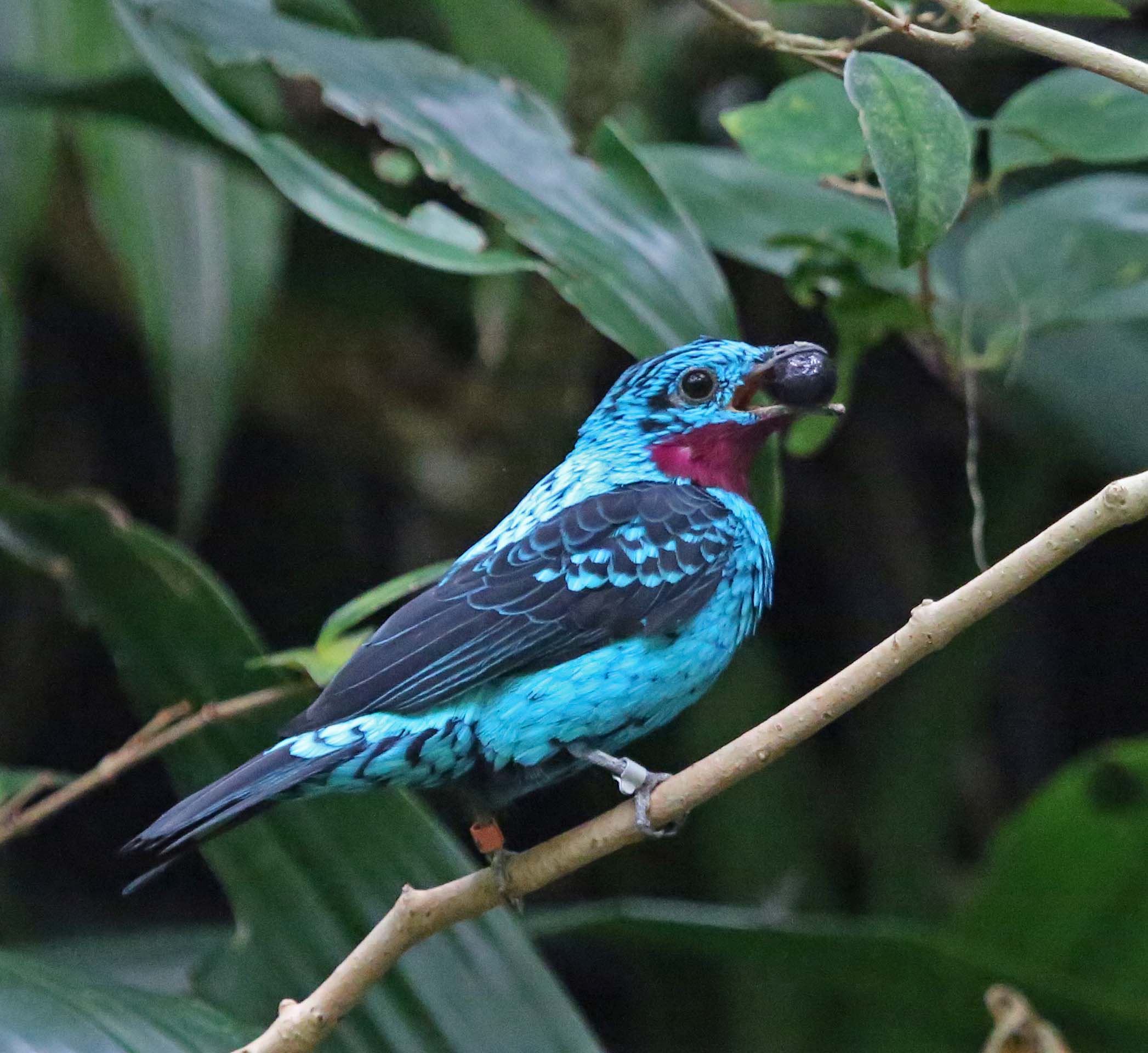
 Animalia Life
Animalia Life